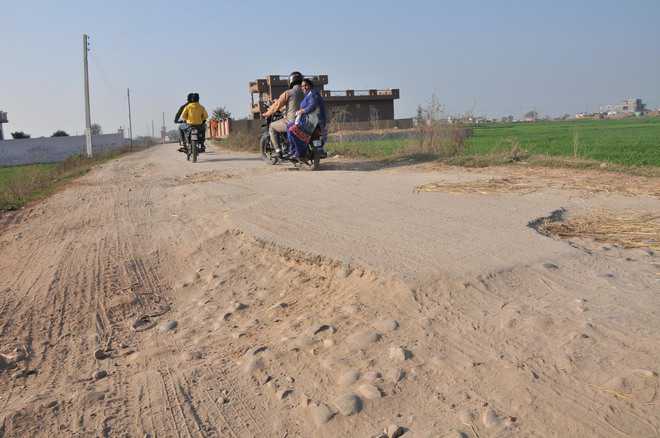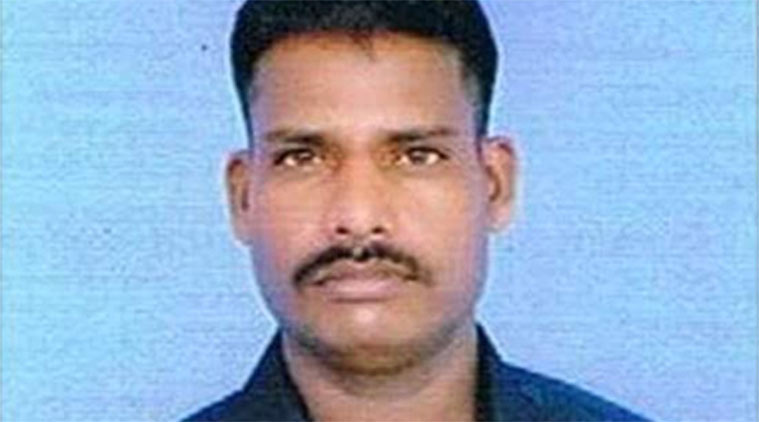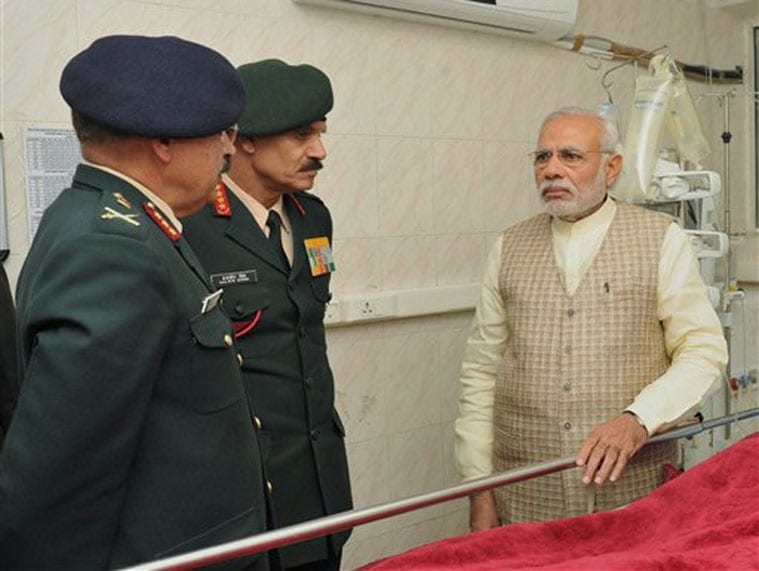SHIMLA: People on Monday bid a tearful adieu to Pampore terror attack martyr Om Prakash at Chikhar village of Shimla district. Slogans of ‘Bharat Mata ki jai’, ‘Aatankvaad murdabaad’ rent the air as the martyr’s body reached Chail army ground.
DEEPAK SANSTA/HTArmy personnel carrying the body of Lance Naik Om Prakash (inset) from Chail military ground to his native village Chikhar near Shimla on Monday.Om Prakash (32) attained martyrdom on Sunday during an encounter with terrorists in Jammu and Kashmir. His body was airlifted to Chail army ground where, it was received by Shimla Lok Sabha member Virender Kashyap, local legislator Anirudh Singh and officials of the state government and army, besides locals.
Entire area was mournful since Sunday when the army broke the news to his brother Sanjay Prakash. On Monday, Om Prakash’s body was first seen by his 85-year-old grandmother Subda Devi. Later other members of the family, including father, mother, brother and wife Krishna Devi, paid the last tributes to the soldier.
A large number of people reached at cremation ground to pay last respects to the martyr.
Martyrs father Nek Ram, holding the Tricolor in hand, said he was feeling proud. “I have lost my son but he went fighting for the country. Now, he is the son of entire nation,” he said. Krishna Devi said, “My husband laid down his life for the nation. Only I know what I have lost in him.” She also said she last talked to him at 10pm on Saturday. “He told me that he would come home next month,” she said. Earlier in the day, the mortal remains of Parkash were brought to Chail.
Daughter lights pyre of Mandi martyr
MANDI: The Central Reserve Police Force (CRPF) personnel Raj Kumar Rana, 40, who laid down his life fighting terrorists on Sunday at Pampore in Jammu and Kashmir, was cremated with full honour at his native village, Bharadu of Jogindernagar sub-division of Mandi district, on Monday.
HT PHOTOSCRPF’s Raj Kumar Rana (inset), who laid down his life fighting terrorists in J&K, being cremated at his native village Bharadu in Mandi district of Himachal Pradesh on Monday.
Rana’s elder daughter Anshita, 14, lit the pyre. Notable that Rana is survived by mother, wife and two minor daughters.
Everyone at the cremation ground was in tears as the villagers offered floral tributes to the martyr. Army personnel and policemen gave a guard of honour.
“I dream to becoming a doctor. My father too encouraged me. But I do not know now what the future has in store for me,” said Anshita, who is too young to fully realise what has happened to the family. She said that army personnel told her that her father fought bravely against the terrorists and took three bullets in the chest.
“I am proud of my father. I know, he will always be my side throughout my life,” she said.








 Lance Naik Hanamanthappa, who was earlier declared dead by the authorities, was found to be conscious but drowsy and disoriented yesterday after he was located during rescue operation.
Lance Naik Hanamanthappa, who was earlier declared dead by the authorities, was found to be conscious but drowsy and disoriented yesterday after he was located during rescue operation. Prime Minister
Prime Minister 
























































